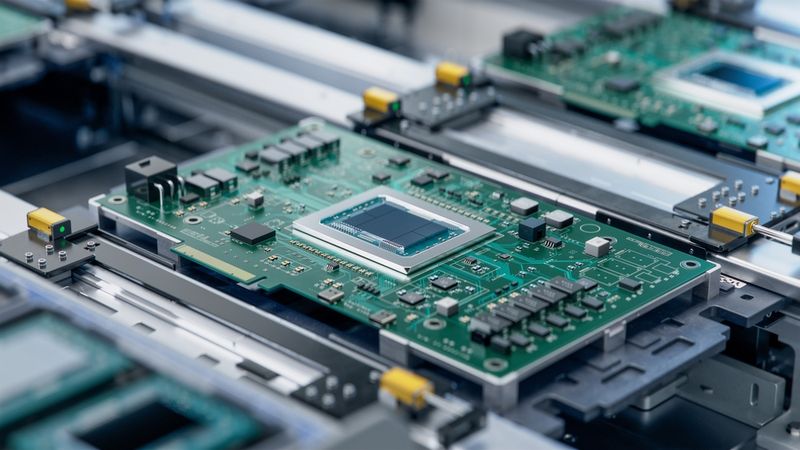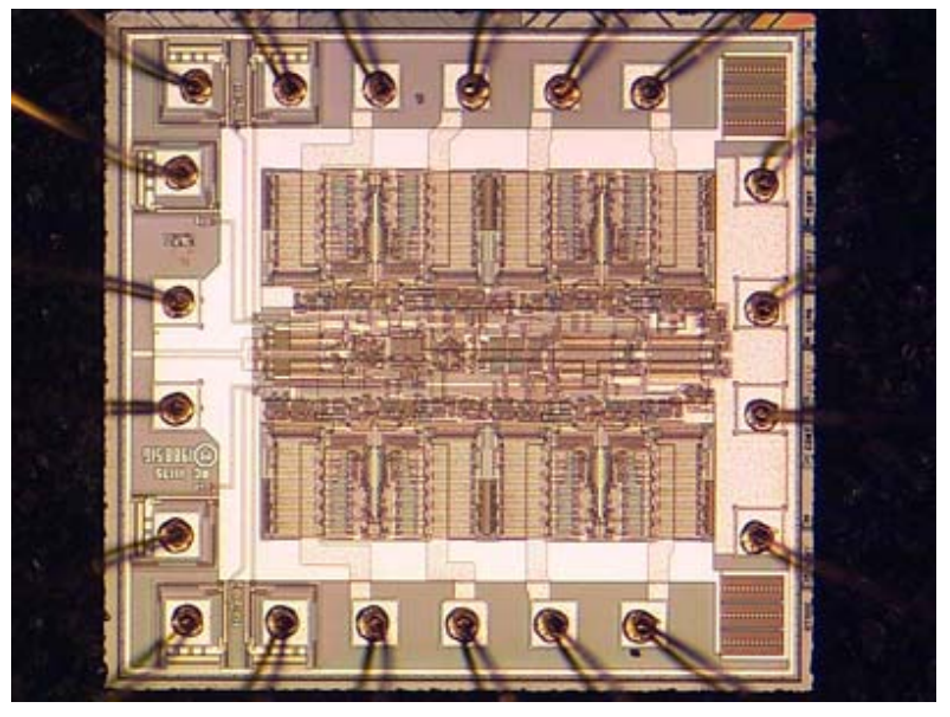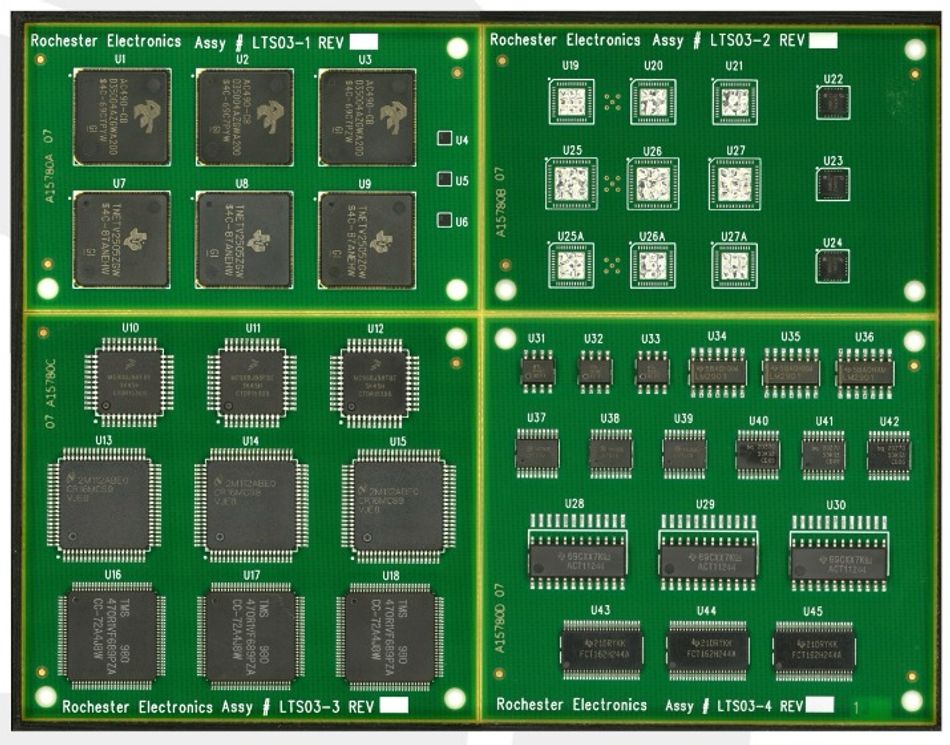Long-Term Storage and Dispelling Myths About Date Codes
Many of the long-held beliefs surrounding date codes have been empirically proven erroneous.
Understand the Future of Component Traceability with Our Latest WhitepaperThe semiconductor industry drives advancements across critical sectors such as aerospace, medical devices, automotive, and industrial automation. But despite semiconductors' transformative impact, the industry's logistics pose significant challenges, particularly in maintaining the continuity and reliability of supply chains. Traditional methods, notably the "two-year date code," have increasingly failed to meet the modern demands for traceability and quality assurance. |
Long-Term Storage and Dispelling Myths About Date Codes
For decades, the semiconductor industry has operated under the assumption that components beyond a two-year date code are at risk of degradation. Initially introduced to mitigate potential material instability and ensure reliability, this guideline has become a deeply entrenched industry practice. However, modern advances in encapsulation materials, controlled storage environments, and traceability systems have fundamentally changed the landscape of semiconductor longevity.
Despite clear technical evidence supporting the viability of long-term storage, the two-year rule persists, leading to inefficiencies, increased costs, and unnecessary component waste. The reliance on this outdated practice fails to account for the significant improvements in semiconductor manufacturing, packaging, and storage compliance standards.
Read on to learn about the origins of the two-year date code standard, the technological advancements that have rendered it obsolete, and the empirical data proving that properly stored components maintain full functionality for well over a decade.
The Origin of the Two-Year Date Code: Justified or Obsolete?
The two-year date code standard emerged in response to legitimate concerns surrounding early semiconductor manufacturing. During the late 20th century, plastic-encapsulated microcircuits (PEMs) were widely adopted, yet these early packaging materials were prone to moisture absorption that led to delamination and internal cracking. When exposed to solder reflow conditions, trapped moisture within these packages expanded and caused physical damage that compromised component integrity.
Similarly, surface finishes on leaded components presented significant challenges. Pure tin plating, like that used for lead frames, was highly susceptible to whisker growth: thin conductive filaments that could cause electrical shorts and system failures. Without established mitigation techniques, the industry viewed prolonged storage as a contributing factor to tin whisker formation and imposed restrictions on component age as a precaution.
Compounding these concerns was the lack of standardized storage protocols. Prior to the implementation of JEDEC and IPC guidelines, storage environments varied widely, with temperature fluctuations and high humidity levels accelerating degradation in uncontrolled conditions. In this context, the two-year date code served as a broad safeguard against unpredictable storage conditions. It ensured that manufacturers and end-users avoided potential failures associated with aging components.
While these risks were valid in the past, the industry has since undergone significant technological evolution. Improvements in material science, plating techniques, and adherence to JEDEC-defined storage standards have mitigated nearly all of the factors that originally justified date code constraints.
Technological Advances in Material Science and Storage Protocols
The widespread adoption of enhanced mold compounds, optimized surface finishes, and industry-standard storage methods has fundamentally altered the equation for semiconductor longevity.
Encapsulation and Mold Compound Improvements
Modern epoxy mold compounds are engineered to resist moisture ingress, drastically reducing the risk of delamination and internal cracking. Compared to their 1980s counterparts, today’s mold compounds exhibit moisture absorption rates that are more than 50% lower, meaning that even prolonged exposure to humid environments does not compromise component integrity.
Additionally, advancements in mechanical stability and thermal resistance have enabled modern semiconductor packages to withstand repeated thermal cycling without structural degradation.
Surface Finish Advances
Surface finish technology has also advanced significantly. Optimized tin-lead (SnPb) alloys have virtually eliminated tin whisker formation, while pure tin finishes now incorporate stress-relief measures such as nickel underlayers and reflow conditioning to mitigate growth. Lead-free alternatives, such as nickel-palladium-gold (NiPdAu) plating, provide enhanced oxidation resistance for better long-term solderability even after extended storage.
Furthermore, modern lead plating techniques, combined with low-permeability packaging, effectively prevent oxidation. These advances guarantee that components stored under controlled conditions retain their original electrical and mechanical properties for well over a decade.
JEDEC and IPC Standards
The introduction of JEDEC JEP160 and J-STD-033 has standardized best practices for moisture-sensitive devices (MSDs). These standards define strict environmental conditions for temperature, humidity, and packaging:
JEP160 mandates controlled storage below 25°C and relative humidity under 10%. This has been shown to significantly extend the functional lifespan of components.
J-STD-033 requires moisture barrier bags (MBBs) with desiccants that prevent oxidation and moisture absorption, even for MSDs classified as highly sensitive [6].
These controlled conditions virtually eliminate the environmental degradation concerns that originally justified the two-year date code limit.
Empirical Evidence in Support of Long-Term Storage
Despite technical advancements, myths surrounding the degradation of older components persist. However, extensive reliability studies and empirical testing have repeatedly demonstrated that properly stored semiconductors retain full functionality well beyond two years.
Electrical and Mechanical Integrity After 15+ Years
Studies simulating extreme aging conditions, such as 85% relative humidity at 85°C, have shown that components stored for over 15 years exhibit negligible electrical degradation. Key parameters, including threshold voltage, leakage current, and switching speeds, remain within original specifications, with variance levels of less than 1% compared to newly manufactured components [2][5].
Similarly, mechanical integrity tests confirm that leaded components stored under JEP160-compliant conditions maintain their structural stability. Lead pull strength measurements consistently show values between 10 N and 15 N, identical to fresh inventory, while X-ray analysis of bond wires and die attach layers reveals no fractures, voids, or degradation [3][5].
Solderability and Surface Oxidation
One of the most persistent misconceptions about long-term storage is that older components lose their solderability over time. However, solderability tests conducted on components stored in moisture-barrier packaging for 15 to 20 years found that over 98% of samples met J-STD-002 solderability standards. Wetting balance tests confirmed that solder joint formation was indistinguishable from newly manufactured components, with wetting times well within the industry threshold of 1 second [2][3].
Modern flux chemistries further address any minor oxidation that may occur. High-activation flux formulations effectively recondition lead surfaces and guarantee robust solder joint formation without additional rework or re-tinning. These findings invalidate the assumption that aging components inherently suffer from poor solderability [3][4].
Counterfeit Risks and Traceability in Long-Term Storage
Another common misconception is that older components are more susceptible to counterfeiting. In reality, counterfeit risk is tied to unauthorized distribution channels rather than component age.
Distributors adhering to SAE AS6496 maintain comprehensive chain-of-custody records such that all inventory remains within authorized channels. Rochester Electronics’ compliance with AS6496 guarantees that even components stored for over 20 years can be traced directly to the original manufacturer, eliminating the risk of counterfeit infiltration in the distribution system [1].
Unlike gray-market suppliers, which often lack documentation or mix authorized and unauthorized inventory, Rochester provides full traceability for every component. That way, customers receive authentic, high-quality parts that meet their performance requirements.
Overcoming Legacy Constraints for a More Efficient Industry
The semiconductor industry’s continued reliance on the two-year date code rule is a vestige of outdated manufacturing and storage practices. Advances in materials, surface finishes, and industry standards have rendered these constraints unnecessary, yet they persist due to legacy habits rather than technical realities. Empirical data overwhelmingly supports the long-term reliability of properly stored components, demonstrating that electrical, mechanical, and solderability performance remains stable for well over a decade.
As a leader in long-term semiconductor storage, Rochester Electronics provides customers with fully traceable, authorized-only components that meet the highest standards of quality and authenticity. By embracing evidence-based storage practices, the industry can move beyond outdated constraints and build a more resilient, efficient, and secure supply chain for the future.
In the next article in this series, we’ll demonstrate how traceability can create a more resilient semiconductor supply chain.



